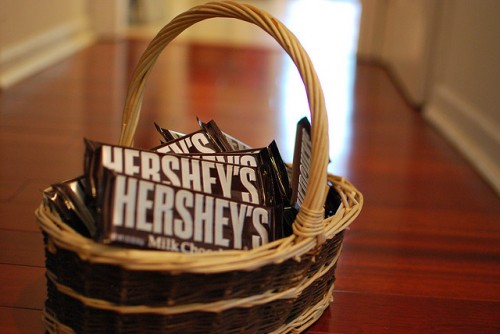Alexander and the Terrible, Horrible, No Good, Very Bad Halloween, by Jennifer Doody

Halloween by hanna horwath
The Halloween season often brings fond memories of tasty candy, fun costumes, and spooky nights. For author Jennifer Doody, it holds another significance altogether. In today’s guest post, Jennifer offers a tale of Halloween candy anguish and misfortune, an important reminder of the cultural differences that inform our tastes starting at a very young age.
————————————————————————————————————————–
Alexander and the Terrible, Horrible, No Good, Very Bad Halloween, by Jennifer Doody
Many years ago, my American family moved to Munich, Germany so my mother could pursue a career as an opera singer. My parents’ decision to not live on the nearby Army base was a deliberate one: as then-aspiring artists, progressives and intellectuals, they were determined that their four-year-old daughter would be immersed in this new and rich culture.
In the fall of my first year of school, my parents invited a boy from my German kindergarten class, Alexander Härting, to join us for Halloween. Back in the 1970s, cultural globalization wasn’t as widespread as it is now: aside from the Army bases, the only evidence of America’s presence was, of course, the golden arches of McDonald’s. Alexander had never heard of Halloween or the ritual of trick-or-treating, but his mother readily agreed, and once we threw together a standby cowboy costume for him, we were ready to go.
As Halloween wasn’t celebrated in Germany, we headed to the Army base to go door-to-door. At the first house, Alexander cautiously held out his bag, glancing over at me to make sure he was doing it right, and murmured a wary “Twick or tweet.” The woman smiled broadly and threw a huge candy bar into his bag, and another into mine. Alexander’s eyes, I remember, went as big as saucers: chocolate in Germany was much more of a special treat, something to be savored, and was often distributed in individual pieces. To have a six-ounce block of chocolate simply tossed into his waiting hands, not just once, but over and over, was the culinary equivalent of winning the World Cup.

Halloween Candy by slgckgc
When our bags sagged with sweet treasures, we returned to my parent’s apartment, where — in the finest American tradition — we dumped all our candy out onto my bed and tore into it greedily. Alexander grabbed the biggest candy bar of Hershey’s chocolate, tore off the wrapper, and bit into it with relish. He chewed joyfully, and then his face sagged, and he burst into tears.
It wasn’t his fault: he was used to German chocolate, of course. I munched pensively on my Snickers bar as he howled in outrage at the universe’s cruelty and betrayal. Shortly thereafter, his mother shamefacedly bundled him up and took him home, as no amount of cajoling or consolation could stop him from weeping. Thirty years later, it’s still the best visual image I have of instantaneous heartbreak and devastating disillusionment.
According to the Chocolate Museum in Cologne, as early as 1877, German chocolatiers set strict purity laws for their chocolate. The restrictions were meant to “protect their products from imitations and introduce binding quality restrictions.” In 1973, Germany was among the 50 countries to sign the first cocoa agreement, led by the International Cocoa and Chocolate Organisation (ICCO). America, the world’s greatest consumer of chocolate, declined.
Today, chocolate made in Germany must meet strict requirements for cocoa: 60% for dark chocolate, 50% for mild dark chocolate, 30% for whole milk chocolate, and 25% of milk chocolate (white chocolate — my personal favorite, although that’s another post! — is not required to contain cocoa mass at all, only cocoa butter). At the turn of the 20th century, Germany led all cocoa-consuming countries with “19,242 tonnes of processed cocoa beans… or 380 grams of cocoa beans were consumed per person annually.” In 2007, Germany ranked sixth in chocolate consumption, with each person in Germany eating 9.32 kg per year (the Irish were first, with each person in Ireland consuming 11.85 kg per year, followed by the Swiss, English, Belgians and Norwegians).
Every Halloween, I think of Alexander, and thank him for providing me with the best visual example of disillusion and despair –- not to mention the irrefutable realization that life is sometimes terribly, horribly, brutally unfair –- that I’ve ever witnessed. But I can’t blame him. To this day, when I’m traversing the streets of Boston and need a chocolate fix, I may make do with American chocolate in a pinch… but what I’m really craving is the creamy, “milk from the Alps” texture of Milka, or the rich diversity of Ritter Sport.
————————————————————————————————————————–
Jennifer Doody is a writer with 20 years experience in university news, communications, and academic editing, based in Boston, Massachusetts. Visit her professional site here to read more of her work.
comments
Leave a Reply

